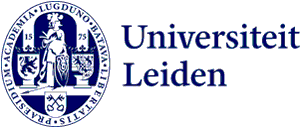Rebekka Grossmann awarded Gerald Westheimer Career Development Fellowship for research on the effects of migration on Cold War visual culture
What does forced migration have to do with the way a humanist aesthetics was forged after World War II? A Gerald Westheimer Career Development Fellowship, granted by the Leo Baeck Institute for the Study of German-Jewish History and Culture will allow assistant professor Rebekka Grossmann to conduct research and organize a workshop on images in motion.
Photography plays a major role in the shaping of opinions. In its ability to move and elicit emotions, it has fostered the creation of international discourses of solidarity. The post-war world saw a new thirst for messages of humanitarian responsibility amidst the Cold War and episodes of decolonization. However, while the relationship between visual arts and the creation of post-war humanitarian tropes has begun to be acknowledged, the fact that many of these tropes were rooted in displacement and exile remains unseen. The fellowship allows Grossmann to follow the routes of refugee artists and journalists, many of whom were Jews trained in Weimar German artistic circles, and investigate their influence on an emerging humanitarian aesthetics after 1945. It links the history of the “One World”- discourse of the post-war era with that of pre-war European visual culture of the 1920s and 1930s and points to the continuities and ruptures in the careers of some of this culture’s main protagonists.
The fellowship will enable Grossmann to travel to relevant archives in Germany and the United States to start building a data base reflecting the emergence of the trope of global connectivity in Cold War era arts and culture. Moreover, Grossmann will be organizing a workshop to be held at Leiden that brings together scholars from multiple disciplines working on the legacies of arts in exile. "We are aware of the influences of migration and exile on the cultures migrants entered, but little has been done about the ways periods of transit and statelessness have shaped their gaze. I hope to direct the attention of scholars and the public to the weight of such episodes for migrants in history and their ways of shaping a variety of cultures at once.”

